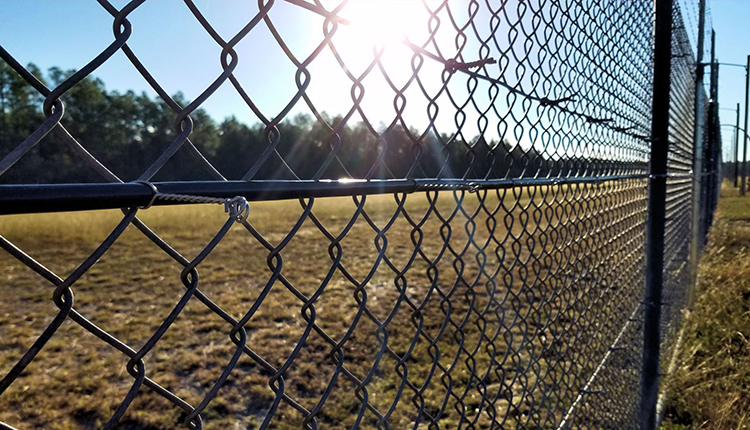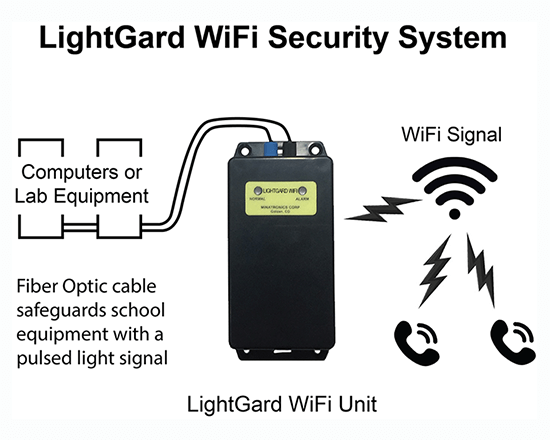The Future of Fiber Security System in High-Tech Security Installations
The Future of Fiber Security System in High-Tech Security Installations
Blog Article
Why Fiber Optic Safety Solutions Are the Future of Protection
The shift to fiber optic safety and security systems marks a substantial development in the world of security, driven by their extraordinary information transmission capacities and resilience to external disturbances. As the landscape of protection advances along with emerging technologies such as AI and IoT, the potential for fiber optics to enhance and redefine security infrastructures comes to be significantly apparent.
Benefits of Fiber Optic Equipments
Among the primary benefits of fiber optic systems is their superior data transfer ability, which promotes the transmission of large volumes of data over fars away without significant loss. This characteristic is particularly valuable for security applications that require the constant monitoring and transfer of high-def video feeds, sensing unit information, and other crucial info. Optical fiber can suit the growing demands of modern-day protection systems, guaranteeing that data continues to be undamaged and dependable.
Furthermore, fiber optic wires are less vulnerable to electromagnetic disturbance, which can be a considerable issue in environments with various digital tools. This resistance boosts the honesty of the data being transmitted, thereby reducing the danger of data violations or system failings. Fiber optic systems are naturally a lot more safe and secure than typical copper cable televisions, as tapping into a fiber optic line without detection is extremely tough.
The resilience of fiber optic wires likewise adds to their charm. They are resistant to ecological aspects such as moisture and temperature changes, reducing upkeep prices and enhancing system longevity. On the whole, these advantages position fiber optic systems as a robust and effective choice for modern security frameworks, guaranteeing reliable and safe information transmission.
Boosted Data Transmission Speed

The ability to transmit large quantities of information promptly assists in the smooth assimilation of high-def video clip feeds and progressed analytics. Protection systems can currently refine and evaluate details in real-time, improving feedback times and situational understanding. Additionally, fiber optic links sustain longer transmission distances without degradation of signal high quality, making them optimal for expansive security networks.
The boosted rate of fiber optic systems not only boosts the efficiency of security procedures however also minimizes latency. This is particularly important in essential situations where timely decision-making can stop protection violations or minimize potential hazards. As companies continue to focus on safety and performance, the need for rapid and reliable information transmission will undoubtedly strengthen fiber optic systems as a cornerstone of modern security framework.
Resistance to Interference
Fiber optic safety and security systems constantly demonstrate exceptional resistance to electro-magnetic interference, a crucial benefit in environments vulnerable to electronic sound. Unlike typical copper cables, which can be adversely affected by magnetic fields, superhigh frequency disturbance, and various other types of electric disturbance, fiber optic cords make use of light to transmit data. This inherent residential or commercial property ensures that the signals stay clear and unaltered, no matter of bordering electronic activity.
The usage of glass or plastic fibers in fiber optic innovation produces an obstacle against disturbance, permitting trustworthy data transmission also in challenging situations such as industrial centers, city locations with high electronic web traffic, or areas near radio towers. This characteristic substantially decreases the chance of signal destruction or loss, making fiber optic systems especially suitable for safety applications where stability and accuracy of information are paramount.
Additionally, this resistance to disturbance enhances the total efficiency and dependability of protection systems, ensuring that tracking and sharp systems work flawlessly. In a globe where protection is increasingly intimidated by sophisticated innovations, the resilience of fiber optic systems stands apart as an essential function, enhancing their status as a crucial part of modern-day safety facilities.
Cost-Effectiveness In Time
Substantial price savings can be accomplished with time with the application of fiber optic security click reference systems. While the initial financial investment might seem greater compared to traditional copper-based systems, the lasting financial advantages end up being apparent via minimized operational and maintenance costs (fiber security). Fiber optic cords are inherently more sturdy and less vulnerable to environmental factors, which equates to decrease replacement and fixing costs over their life expectancy
In addition, fiber optic systems call for less power to operate, which further decreases power costs. Enhanced data transmission capabilities permit fewer repeaters and amplifiers, decreasing tools financial investment and enhancing setup procedures. The scalability of these systems likewise adds to cost-effectiveness, as companies can expand their safety infrastructure without sustaining considerable additional costs.
One more variable to take into consideration is the enhanced efficiency in monitoring and reaction capacities that optical fiber supply. Boosted real-time data transmission can cause quicker incident response times, possibly mitigating losses and liabilities related to security breaches. Altogether, the long-lasting benefits of fiber optic safety and security systems not only validate the preliminary expense yet additionally place them as a financially sensible selection for companies seeking durable protection options.

Future Innovations in Protection
Advancing innovations are established to reinvent protection systems, integrating expert system (AI) and artificial intelligence to improve hazard detection and response abilities. These innovations will certainly permit security systems to evaluate huge quantities of data in real-time, recognizing patterns and anomalies that show potential threats. This aggressive technique will certainly enable much faster decision-making and more efficient event actions.
Additionally, the unification of the Net of Things (IoT) is paving the method for interconnected safety and security devices, providing detailed surveillance and monitoring. Smart sensing units can relay details concerning ecological modifications, while automated signals can alert safety and security employees immediately of questionable activities.
In addition, the evolution of biometric technologies will better boost safety and security systems. Face acknowledgment, finger print scanning, and retina recognition are coming to be extra sophisticated, giving layers of authentication that are challenging to bypass.
Verdict
In verdict, fiber optic safety systems stand for a considerable development in defense modern technology, using exceptional information transmission rate, resistance to electro-magnetic interference, and long-lasting cost-effectiveness. As like it the need for advanced security services continues to expand, the integration of optical fiber with arising technologies such as AI, IoT, and biometrics will further enhance safety and security frameworks (fiber security). The mix of these advancements will certainly make certain a more protected and responsive environment, strengthening optical fiber as a cornerstone of future safety and resource security systems
Report this page